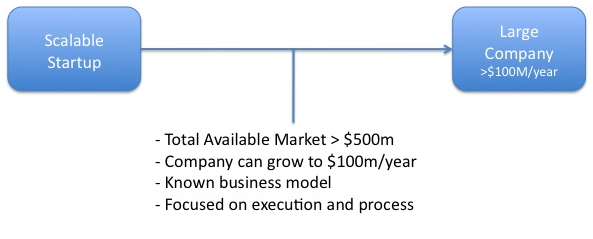At what point does a software startup become a full-fledged company? Does the distinction occur when the startup hires a certain number of employees? Or is it when they have a certain number of customers? Although the exact point may be ambiguous, at $100M in revenue, it can be assumed that the startup world is fading. The company now faces a whole new set of larger company concerns such as internal controls, segregation of duties, and database size. Since the majority of these responsibilities will fall on the accountant’s shoulders, they need to make sure they have a revenue recognition system that will support them in addressing these new issues.
Intuit, the owner of QuickBooks, claims that its revenue recognition system can support companies up to $500M in revenue. Maybe that is true for a retail or manufacturer, but it is not true for software companies. As we have noted previously in this blog, software revenue recognition rules require careful calculation and documentation. Tracking VSOE should be done by geographic region and by customer type. For professional services, hours need to be tracked and revenue needs to be recognized as specific milestones are completed. None of these calculations can be natively performed inside QuickBooks. Either companies perform these outside of QuickBooks using spreadsheets or they purchase an ERP system that can handle the transactions.
For most software companies, all of this was probably addressed when they achieved about $10 million in annual revenue. However, some companies may have chosen to continue with QuickBooks as their revenue recognition system and support it with various band aids. Other’s decided to use spreadsheets and book the final journal entry in QuickBooks. However, at $100M, the decision can no longer be put off and software companies need to look for a system that can address the following:
- Internal Controls – By now, the company is large enough that investors are concerned with how cash is handled at the company, inventory is tracked, and whether accounts are reconciled. They want Senior Management to implement a system of internal controls complete with narratives and the audit trails. For companies still on QuickBooks, this will be an arduous task. For those that are on a system like NetSuite, the system itself will help managers become compliant.
- Segregation of Duties – Investors do not want any single individual to have the authority within a system to execute and subsequently hide a fraudulent or inappropriate transaction. Particularly within the accounting department, system authorities need to be separated and distributed amongst two or more users. This is another area where QuickBooks cannot meet the needs of a larger company.
- Database Size – As companies become larger, their master lists (vendor, customer, inventory) start to become larger. Some companies have upwards of 10,000 or more vendors that they purchase from. The accounting system needs to be able to support master file lists that continue to grow. QuickBooks appears to have performance problems when the master file size reaches about 10,000 entries. It only gets worse as the company continues to grow.
If a software startup has grown to $100m in revenue and has still not switched from QuickBooks, now is the time. The new problems inherent in becoming a large company need to be address by your revenue recognition system. If you want advice on how to proceed, please reach out to us.
[subscribe2]




